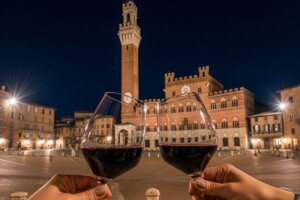The Italian wineries, by author but not only, are increasingly being visited and are focused on wine tourism, a well-established phenomenon, albeit constantly evolving. And they can, or perhaps must, become engines of the reception and tourism of the territories, beyond wine, improving the synergy with other local bodies responsible for tourism management (collaboration in many cases non-existent), also in view of an approach to wine, and tourism, increasingly linked to experience, rather than to the product itself. It is one of the reflections, to WineNews, of Magda Antonioli Corigliano, now professor of the Department of Policy Analysis and Public Management at Bocconi University in Milan and director of the Courses on Tourism Policy and Strategy of Unwto (the United Nations agency dedicated to Tourism), but above all the first “ideologue” of wine tourism in Italy and pioneer of studies and analysis of wine tourism when, over 20 years ago, this phenomenon in Italy was just beginning.
An enotourism that, Antonioli underlines, is now a large scale tourism, but not a mass one, and sometimes a niche tourism, a specialized segment, but at the same time a transversal one, able to attract the attention also on smaller towns and villages, with their history and their culture, that often intertwines with the production of wine and other excellent products, and more and more often linked to themes such as wellness tourism and not only, as well as a strategic element for the “high” image of the made in Italy in the world, and for the attraction of foreign flows.
And in this phenomenon, a central role is played by wineries, considered not only as places where to discover and taste wine, but also as garrisons of the territory and vineyards, and as custodians of the “genius loci” of the territories, a role that is best expressed when the winery fully develops its ties with other varieties, not only gastronomic, of the territory, with increasingly important repercussions from the economic point of view.
A winery that “becomes a place of comfort and, with specific rules, must be linked to the different factors of the territory, from history to tradition, to the wider context of the territory itself. In short, they must become an integral part of the tourist offer, in an organic way. However, the various players are often still unable to provide adequate information, and there is still a lot of work to be done on this”.
However, there are many aspects to improve. Starting from the construction of communication policies based on the different targets from wine and its knowledge, and from the wineries, extend to the whole territory.
The number and importance of the wineries of author, which have grown significantly in the last 10 years, have also a central role in Italy.
On the other hand, Antonioli underlines, the identity of the producer is expressed by the winery, distinguishing his quality and productive aspects, while the architect creates the “container” of the industrial activity, “because it is essential that a global experience is created for the visitor, but where the predominance and value of the raw material and its creator should never be forgotten, the producer - even in the aspects of technological innovations that are made and that are always very appreciated by the visitor - to which is added creativity, the “mise en place” and all the rest of the container”.
Container that, if it is an author, or in any case linked to art, acquires value, and transfers it also to the brand of the winery, because, for example, initiatives related to art and culture, and artistic installations in the cellars or in the areas owned by the companies, “strengthen the image, testify to dynamism and transmit positive values to visitors, and strengthen the link with the territory”.
The cellars signed by the starchitects are, without a doubt, a great plus. “We could say that the oenologist and the producer stand for the production (to the quality and content of the wine), as the architect stands for the container, considered as aesthetic taste, beauty, and inclusion in the landscape context. Someone recently stated that the cellars of the author represent the most important phenomenon of private patronage of great architecture, enriching the artistic and cultural heritage of the territories of various regions worldwide. And looking at today’s “wine cathedrals”, I think we have a confirmation. How to produce wine, making architecture is a continuous “tension”, a dynamic balance between knowledge and experimentation, knowledge and research, know-how and intuition. Like wine, every architecture is unique, but if it is authentic, it is able to open up to everyone, both beginners and experts, to be recognized, appreciated and bring a note of pleasure, taste, and elegance into our lives. Architecture and wine are both considered expressions of aesthetics, in the sense of the ancient Greek “aisthesis”, which means pleasure that comes from the senses”. Wine tourism, concludes Magda Antonioli Corigliano, is exactly the same.
Copyright © 2000/2025
Contatti: info@winenews.it
Seguici anche su Twitter: @WineNewsIt
Seguici anche su Facebook: @winenewsit
Questo articolo è tratto dall'archivio di WineNews - Tutti i diritti riservati - Copyright © 2000/2025









































































































































































































